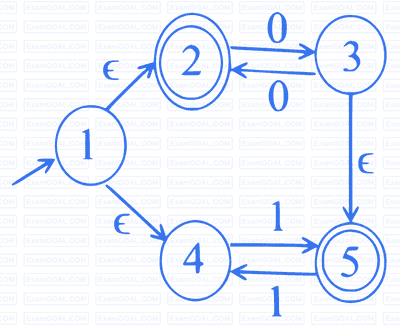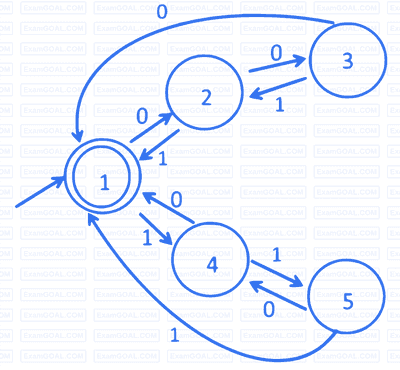Let M be the 5-state NFA with ε-transitions shown in the diagram below.

Which one of the following regular expressions represents the language accepted by M?
Let L1 be the language represented by the regular expression b*ab*(ab*ab*)* and L2 = { w ∈ (a + b)* | |w| ≤ 4 }, where |w| denotes the length of string w. The number of strings in L2 which are also in L1 is __________.
Consider the 5-state DFA $M$ accepting the language $L(M) \subseteq (0+1)^*$ shown below. For any string $w \in (0+1)^*$ let $n_0(w)$ be the number of 0's in $w$ and $n_1(w)$ be the number of 1's in $w$.

Which of the following statements is/are FALSE?
Consider the following two regular expressions over the alphabet {0,1} :
$$r = 0^* + 1^*$$
$$s = 01^* + 10^*$$
The total number of strings of length less than or equal to 5, which are neither in r nor in s, is ________